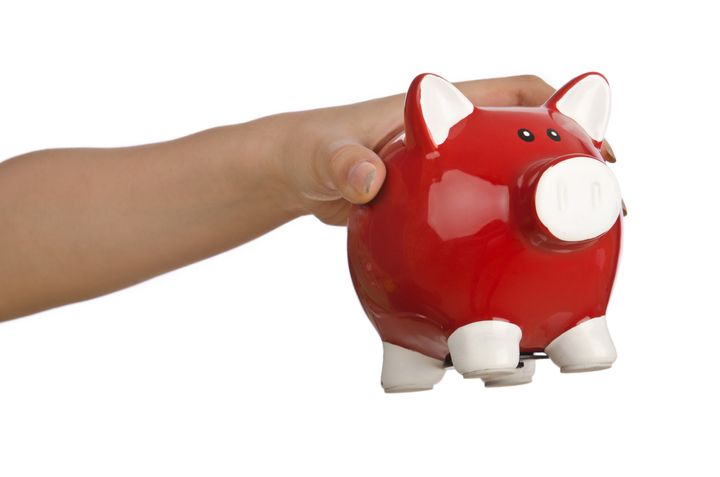
An emergency fund is cash that you've saved for one purpose: to help you cope with the unpredictable emergencies that life hands you without disrupting the everyday routine. It could be for an accident or a health issue. With your fund, you have room to breathe. You don't have to panic if you have to visit the hospital emergency room, or your car breaks down, or the hot water heater blows.
The key, however, is to leave the emergency fund completely alone until you need it. Deposit your money, let it earn a little interest, and ignore the balance until an actual emergency occurs.
Best short-term methods for building an emergency fund
In the short-term, take small steps. Start by setting a reasonable goal. Plan to have an emergency fund of, say, $300 to $500. That's a goal that you can reach in a few weeks if you have a good income, and it can make a huge difference when you have an emergency.
With the goal set, the next step is to plot your moves to accomplish it. If you can save $30 to $50 a week, you can have a $300 to $500 emergency fund in just 10 weeks. That becomes your overall scheme.
Plan a realistic savings program at first, both in the amount you can save each week and the overall amount. Make it a challenge, but not an unreachable number.
There are plenty of ways to come up with extra money throughout the month. Just consider these suggestions:
Shave unimportant spending
Negotiate a rate reduction on your credit cards
Set up a carpool
Shop around for better auto insurance
Same for homeowners insurance
Install a programmable thermostat
Use a list for grocery shopping
Plan only one special outing a month
Get a roommate
People often want to spend the bits of unexpected money resulting from these economies without thinking about it. Don't do it. The important thing is to hold on to these hard-won savings, instead of just spending them on something else. If you find that you're actually saving more than $50 a week with this method, put more into the emergency fund, or pass it on to your retirement savings.
Making your savings automatic
Once you've trimmed $50 a week from your spending, you can set up an automatic savings plan to move that money straight out of your checking account and into the savings account you're using for an emergency fund. If you have online banking, it's pretty easy. Set up an automatic plan to shift $50 a week into savings, and then forget about it.
Set up an online savings
It's a good idea to set up an online savings account at a bank that's different than the one you normally do business with for your emergency fund. Doing this lets you shop for good service and good rates, earn higher interest on your funds, and forces you to put the money in a place that's not quite so easy to access. If it's a savings that's not linked to your ATM card, you would have to authorize the transfer, which may take a day or two. You could even set up automatic deposit of your paychecks each month with a predetermined amount set for savings.
Set a higher goal
Once the account you've established to save $50 a week has accumulated enough money, it'll start earning noticeable interest on its own. That's the time to set another, higher goal -- maybe an emergency fund of $1,000. Keep your automatic savings plan in place, but increase the amount. Once you reach that goal, aim for a single month's worth of living expenses. Then two months. Then three. And just keep watching that emergency fund grow.
When you do have an emergency, the funds are there for you. Use them instead of putting an emergency repair or other unexpected bill on your credit card. There's no need to revert to plastic.
Building an emergency fund and other savings for the future
For emergencies and savings in general, establish good habits by setting aside 15 percent of your annual income when you're in your 20s, with five percent going into your emergency fund and 10 percent to long-term savings. As you age, increase the percentage of income you're saving, to 20 percent in your 30s, and to even more in your 40s. Every dollar you manage to set aside for saving limits your consumption by a dollar.
Also, don't reflexively spend unexpected money that comes your way. "Found money," or any money that's outside your budget, should be put to good use in your emergency fund. Examples are tax refunds, bonuses, inheritances, and gifts.
To supplement your savings, consider your employer's tax-free retirement savings plans. Contribute as much as the non-taxable limits allow if possible, but certainly enough to qualify for the company's matching funds. Another advantage to these plans is the allowance for participants to float a loan from their contributions in an emergency. Also, be sure to fund to the max the health savings account provided at work.
Long-term retirement
Alongside your emergency fund, let your long-term retirement savings accumulate and grow. In most retirement savings plans investments are managed through the provider. The younger you are, the more actively you'll want to invest, keeping in mind the risk to principal involved (risk-taking should diminish with age). Remember, the more income you save instead of spending for consumption now, means the less income you'll have to replace after retirement.
The best way to make sure your savings grows is by controlling debt. And your prime target should be credit card debt because it's the most expensive. Pay down credit accounts and aim at maintaining a maximum 30 percent credit utilization ratio. In other words, keep your card balances at 30 percent of the total credit limit. If your total credit line is $10,000, owe no more than $3,000 (and spread the same ratio over multiple accounts).
Your emergency fund shouldn't be touched -- until you actually need it. When you're sick or hurt. When you lose your job. When something indispensable needs a repair.
Thanks to your planning ahead, life has some financial stability.
Holly Martins is a regular contributor at MyBankTracker.com.
